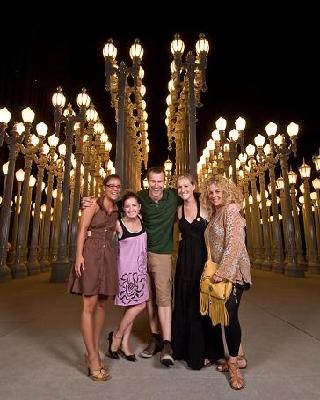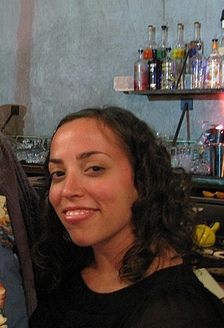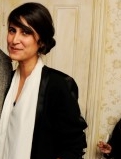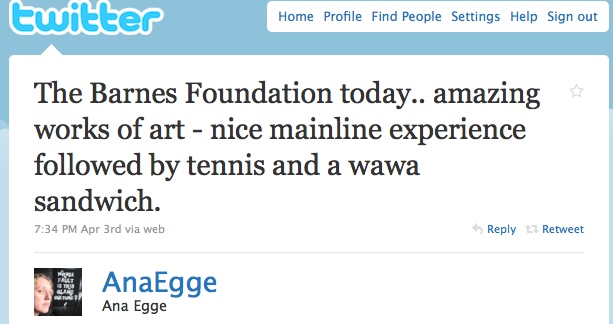By Adam Rozan
Construction is a fixed presence across the American museum landscape. Our visitors have grown accustomed to seeing it. However, the greatest renovations occurring have little to do with brick and mortar projects, but rather the varying degrees of change in visitor-focused services, program offerings, and promotion-oriented thinking. Membership.
Seemingly, the entire museum community has jumpstarted their programming, exhibition, marketing, and online departments overnight. This change includes the recognition of new and more digitally inclined audiences, and their psychographic needs and interests. It would seem then, that many of our senior staff, could easily be confused for executives at Disney, Starbucks, and even Walmart with their approaches to customer/visitor services.
Yet, beyond the articles discussing evening parties, social museum experiences, and deepening levels of engagement for young contemporaries, some of the most significant changes are occurring outside of curatorial, programming, and marketing departments; it would seem that the true innovators at museums today, work in membership departments. Could it be the change agent in your museum is the membership manager?
To find out, I asked Jason Gaulton, Los Angeles County Museum of Art, Sunny Green, Oakland Museum of California, Emily Lakin, Yerba Buena Center for the Arts, Mark Mills, The Barnes Foundation, and Joyce Sitterly, New Museum to discuss membership.
What you’ll read below is in many ways extremely practical, and completely within the scope of any given comment card, or member feedback study. At the same time, each program is responding to the growing needs and demands of their members, and an overall consciousness of responsibility. Their essays are responses to national trends, such as the environment, with needs to be green or paperless, and an overall commitment to individualizing each membership to the specific member.
These five leaders were asked to trend cast their overall views on museum membership, reflect upon their own institutions, and share where they are going. Here are their responses.
Jason Gaulton
Membership Manager
LACMA, Los Angeles County Museum of Art
http://www.lacma.org/membership/Muse.aspx
 The future of Muse membership lies in the blending of our demographics lifestyle with the museum's mission. Muse is the Los Angeles County Museum of Art’s membership group aimed at further engaging art enthusiasts and artists in their 20s, 30s, and 40s. For the better part of fourteen years, Muse has programmed a series of events enabling its members to experience unique opportunities both at the museum and throughout Los Angeles. Thanks in part to a relatively low average commitment of $140 and an extremely active calendar, it has grown into one of the largest programs of its kind in the nation. However, it has realized only a fraction of its potential.
The future of Muse membership lies in the blending of our demographics lifestyle with the museum's mission. Muse is the Los Angeles County Museum of Art’s membership group aimed at further engaging art enthusiasts and artists in their 20s, 30s, and 40s. For the better part of fourteen years, Muse has programmed a series of events enabling its members to experience unique opportunities both at the museum and throughout Los Angeles. Thanks in part to a relatively low average commitment of $140 and an extremely active calendar, it has grown into one of the largest programs of its kind in the nation. However, it has realized only a fraction of its potential.
Muse remains largely unknown in Los Angeles. It almost resembles a speakeasy in nature and not only because it features large quantities of booze. It’s something you hear about from a friend but you’re not really sure what it is and you’re definitely confused how to get in. Our demographic is more adventurous but still accustomed to doing certain things in certain places. Attending museums in the Miracle Mile does not fall within the average twenty something's routine. Muse needs to find a way into that. On a given night you're likely to find more of our potential members in bars, restaurants, theaters, and concerts halls. And you're definitely more likely to find them staying within their own neighborhood. As such, Muse is incorporating more food, movies, and music into our events—we've always had the drinks-to correlate with the common interests of potential members. It falls in line with our initiative to celebrate art in all its forms. Also, our programming initiative now includes a monthly presence in a different Los Angeles neighborhood to bring our message to where our audience is.
Meanwhile, the backbone of our programming schedule remains our monthly on-campus events, enabling Muse to serve the museum's goals of attracting members and increasing attendance to its exhibitions and collections. Each month we do curator-led tours, in addition to the occasional movie screenings and our four major annual events, bring our members and guests to the museum. It is vital these events not only continue but progress for Muse to expand to its full potential.
Greater assimilation with the lifestyle our prospects are already living. Continuing to improve our on-campus opportunities. Throw in an increased online presence, with a focus on a better web site, and Muse has itself a bright future.
Sunny Green
Membership Manager, OMCA, Oakland Museum of California
http://museumca.org/membership
 In January 2010, the Oakland Museum of California launched its Green Membership Program. Members at all levels can choose to receive only electronic communications from the Museum. The only thing they receive through the mail is their membership packet. Green Members help OMCA reduce our carbon footprint, decrease our paper use, and assist us in keeping costs low. OMCA will also conduct special Green Member sale opportunities in our online Store. Since the program debuted, more than 7% of OMCA’s membership base has converted to Green Membership.
In January 2010, the Oakland Museum of California launched its Green Membership Program. Members at all levels can choose to receive only electronic communications from the Museum. The only thing they receive through the mail is their membership packet. Green Members help OMCA reduce our carbon footprint, decrease our paper use, and assist us in keeping costs low. OMCA will also conduct special Green Member sale opportunities in our online Store. Since the program debuted, more than 7% of OMCA’s membership base has converted to Green Membership.
Beginning in 2012 in conjunction with the reopening of the Gallery of Natural Sciences, we will launch a Kids Membership program. This innovative program will be modeled across all giving levels from Individual ($60) through Donor Forum ($1,250). The membership will be in the child’s name with flexibility allowing a parent, caretaker, nanny, grandparent or friend to accompany the member. Surveying of members to see what they would like in a Kids Membership program will be conducted during the upcoming exhibition, Pixar: 25 Years of Animation.
OMCA will also be partnering with Groupon.com to offer Family Level memberships at a discounted rate. Groupon.com extends discounts on products or services by promising businesses a minimum number of customers. In addition to acquiring new members, OMCA will also reach new audiences and save resources on promotion.
Emily Lakin
Membership Manager
YBCA, Yerba Buena Center for the Arts
http://www.ybca.org/membership/
 There has been a lot of talk among my membership colleagues as to how our numbers have fared in the last year. All of our programs have been affected, yet against all the turbulence, we see that visitors are reassessing their priorities, making the choice to spend their limited time and money on meaningful experiences rather than material extravagances. The “stay-cation” has replaced the vacation, and it is as a local provider of cultural engagement that museums have stepped into the spotlight. But how do we address a reduction in members, knowing that our patrons are looking for the value in our programs?
There has been a lot of talk among my membership colleagues as to how our numbers have fared in the last year. All of our programs have been affected, yet against all the turbulence, we see that visitors are reassessing their priorities, making the choice to spend their limited time and money on meaningful experiences rather than material extravagances. The “stay-cation” has replaced the vacation, and it is as a local provider of cultural engagement that museums have stepped into the spotlight. But how do we address a reduction in members, knowing that our patrons are looking for the value in our programs?
It is the definition of value that must be addressed. Currently at YBCA, our traditional model membership program is an idiosyncratic response to the art we present. Members receive benefits such as ticket discounts and free gallery admission-packaging the museum experience as a commodity. Yet our mission to present cutting-edge art that reflects the profound issues and ideas of our time, expands the boundaries of artistic practice, and celebrates the diversity of human experience, is lost in calculating that two Opening Night Party admissions for a couple is the price for a Basic Membership. It is with this focus on experience and a deeper engagement with the art we present that we are looking to shape our membership program towards an “affinity” model that inspires loyalty and participation.
As Nina Simon writes in her Museum 2.0 blog post “Could You Split Your Membership?” value membership is obviously revenue generating, but problematic. Affinity groups want a deeper connection to the institution, and in that connection we find another kind of value. Nina suggests that a split membership (an annual pass for the value members and exclusive content or programs for the affinity members) fulfills the needs of each group and provides opportunity for overlap. Think of the 1stfans program through the Brooklyn Museum- they receive exclusive access to the 1stfans Twitter feed and private meetups on First Saturday. It is, in effect, a relationship-based and community centered model that lives as an add-on or alternative to their existing membership program. These types of innovative thinking have inspired us at YBCA to rethink the way we structure our membership program and interact with our patrons. We are looking at piloting models of affinity-based groups while at the same time maintaining the discounts offered through membership.
Mark Mills
Director of Individual Giving and Visitor Services
The Barnes Foundation
http://society.barnesfoundation.org/site/PageServer?pagename=2009_Membership_Page
Just Keep Asking!
When museum visitors are asked why they aren’t members, the number one reason is they haven’t been asked. This philosophy has never been clearer to me than recent events at the Barnes Foundation (www.barnesfoundation.org).
The Barnes created its membership program in 1999 and a decade later it had 350 members. Clearly they had not been asking. Here’s how with a couple new initiatives and a low risk investment, the membership has grown to 3,500 in just 7 short months (and climbing).
1. Make your Website work for you.
Increasing membership messaging throughout your website is the cheapest and fastest way to increase your membership base. Prior to my arrival in July, membership was only mentioned on the one or two membership-specific web pages (which were buried under corporate membership pages). We quickly changed messaging and added membership text about free tickets to the home page, and added it to the visiting and ticketing pages promoting free tickets. We also revamped the membership pages to promote the value of membership. Since making these small changes, we have sold over 560 memberships generating $50,000 on the website.
2. Engage your front line staff in membership sales.
The second cheapest source, and frequently the largest source of new members, is your admissions and store staff. Are they asking everyone they speak with if they want free tickets or extra discounts? The Barnes’s Visitor Services team wasn’t. Since adding information about membership to the ticket sale, educating the staff about the value of members, and adding a cash incentive for new sales, nearly 200 new members have joined and another 125 through the store. Combined that is another $30,000 in new revenue with no significant expenses. We have a way to go, but it’s a start.
3. Mail is still a viable and important source of new members.
I cringe every time I hear about organizations cutting their direct mail acquisition efforts saying they can’t afford to do it. My advice is that they can’t afford not to mail. Museum across the country big and small are still generating great results and net revenue through their mail programs, let alone investing in tomorrow’s renewals. The Barnes had never mailed before the fall. We tested a simple invitation style membership mailing in the fall with the simple message “Your Invited” on the outer envelope to 38,000 regional homes made up of ticket buyers and exchange lists. This was a big risk since we had no idea what the reception would be. However, I determined I would need only 250 new members to break even on the mailing—a modest risk out of 38,000 homes. In return, we welcomed nearly 1,000 members and netted $75,000. From the second mailing in January we welcomed another 600 members and netted $30,000. As we build toward the grand opening in May 2012, direct mail will be a significant part of our acquisition plan. (Also, remember, direct mail sells admission tickets too!)
The tools I’ve used are simple and in most ways traditional. Lesson learned: people want to be a part of your organization they are just waiting for the invitation.
Joyce Sitterly
Membership Director
New Museum
http://www.newmuseum.org/join/
Museum memberships (like gym memberships and lattes) were the first to go when jobs were lost and spending cut. So museums are getting creative in attracting and keeping members at their similarly reduced budgets.
 We considered what was most attractive to members and in our case its free admission (for lower level) and events providing access (for the higher level). Making these benefits even more enticing was our goal – so we expanded savings on admission to guests of members and provided MORE events with BETTER access. We also began promoting neighborhood establishments to our member’s…discounts at new restaurants, boutiques, etc… This is a no-cost (to us) benefit that promotes local business and connects Members with our neighborhood, which is still unfamiliar territory for many living in New York City.
We considered what was most attractive to members and in our case its free admission (for lower level) and events providing access (for the higher level). Making these benefits even more enticing was our goal – so we expanded savings on admission to guests of members and provided MORE events with BETTER access. We also began promoting neighborhood establishments to our member’s…discounts at new restaurants, boutiques, etc… This is a no-cost (to us) benefit that promotes local business and connects Members with our neighborhood, which is still unfamiliar territory for many living in New York City.
Like many, we were forced to reduce expenses while providing better service to our Members. We did so by almost eliminating our paper materials, which in turn reduced our postage and mailing costs. We made it a goal to collect a majority of our member emails and send most communications this way. As for staff, it’s about maintaining 110% output with less personnel. Reducing expense while increasing efficiency is now a consideration down to the smallest detail. It all pays off in the end!
All in all, it’s about maintaining or increasing quality while reducing expenses – for Members and Museums alike!










Comments
Thank you for the multiple perspectives on membership and visitor services.
yeah, Adam, this is a great piece...a lot covered, so difficult to "respond"...looking forward to what others say...
Very thoughtful piece. What I'd like to see to round it out is the perspective of a membership manager at an institution that doesn't charge admission.
great idea, Yoko! Do you have someone or somewhere in-mind?
Yoko,
That's great... O.K., let's ask The Baltimore Museum of Art, Cleveland Museum of Art, Cincinnati Art Museum, Smithsonian, what do you have to say?
Adam, Thanks so much for bringing this piece together. Different stories - but always back to basics. Passed the link along to my part time membership manager who was thrilled and energized to read what the Big Boys and Ladies were up to. She was to quick assure me that she found practical applications in her shop.
You could also contact the Membership staff at The Nelson-Atkins Museum of Art in Kansas City, MO which has free admission and a newly-revamped membership structure.
Mark,
Have you experimented with, or find that, people respond to special web-only membership offers? We're actually not an art museum but a non profit history magazine (Connecticut history) and I'm wondering how I might make our web site work better for getting new subscriptions. (I'm a former membership coordinator for an art museum and use all those skills in marketing subscriptions).
Add new comment